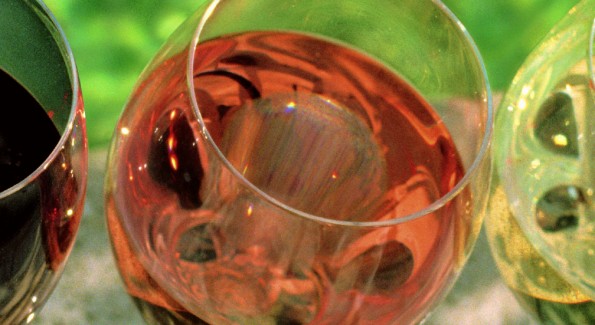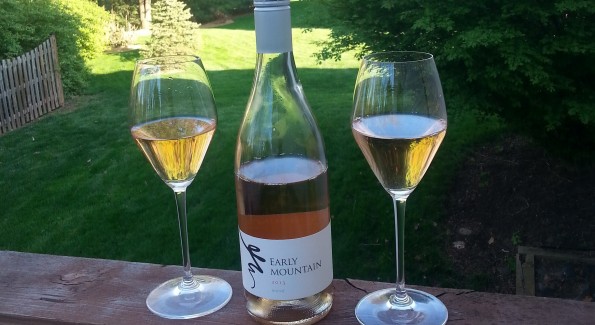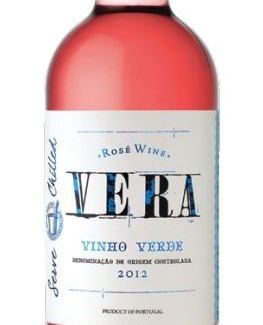Think all dry pink wines are created equally? Think again.
By Kelly A. Magyarics

Rosé wines from Provence are bright, sunny and fresh. (Photo courtesy Francois Millo and CIVP)
Can you handle one more article extolling the virtues of dry rosé? Good. Let’s get this out of the way, as every article about rosé needs to: it’s great, it’s versatile, and you need to be drinking it.
That being said, not all pink wines can be lumped into the same category. Head to your local wine store and take a look at the rosé section. What do you see? Wines with a huge variety of color, from the palest copper to a pinkish red that could almost pass for Pinot Noir. Take a closer look at the label, and you’ll notice that rosé is made from many different grapes, from Merlot and Mourvèdre to Cabernet Sauvignon and Grenache, in many different regions. And an even closer look will yield differing alcohol levels in the final wine depending on the grapes used and the region where it’s grown.
In short, rosé wine can vary greatly from bottle to bottle, grape to grape, and region to region. One good rule of thumb to use when shopping for rosé is to closely check that color. Typically, the more intense the hue, the fuller the body. It also helps to note the grapes in the bottle. If it’s a Cabernet Sauvignon-based wine, it will have a firmer structure, more tannins (and perhaps more alcohol) than a rosé made from Pinot Noir, which has thinner skin and renders less color and tannins. If you are a fan of lighter red wines, you might want to seek out a paler rosé, and vice versa for fuller-bodied reds.
No matter the bottle, I always seek out rosés with the youngest vintage I can find. These wines have the bright acidity and fresh fruit that appeal to me and make them food friendly. Of course, interesting things can happen after a few years in the bottle, when the wine can oxidize a little, turning it from pink to orange and peach tones, and pick up secondary characteristics that can be funky and quite appealing. If that’s your thing, go for it.
Here are some rosé suggestions for summer sipping, with food pairings, and to whom they may appeal.
2013 Early Mountain Vineyards Rosé
This Virginia Merlot-based rosé is elegant, subtle and nuanced. It has a pale copper/salmon hue, aromas of fresh strawberries and honeydew melon, refreshing yet balanced acidity and a subtle minerality.
Best for: Crisp white wine drinkers
Best with: Grilled mahi mahi, oysters on the half shell, steamed crab legs
Where to find it: The Vineyard in McLean, or online, $18/bottle

Early Mountain Vineyards from Virginia creates a Merlot-based rosé. (Photo by Kelly Magyarics)
2013 Stinson Vineyards Rosé
Another great example of Virginia rosé, this wine is produced with 100% Mourvèdre grapes, which render a medium-body, aromas of fresh strawberries and watermelon, and a little enticing smoke on the finish.
Best for: Fans of Southern France and Bandol rosés.
Best with: Smoky grilled pork ribs, beer can chicken or cedar-planked salmon
Where to find it: Select DC-area stores, or online, $18/bottle
2013 Mulderbosch Cabernet Sauvignon Rosé
Made from Cabernet grapes grown on South Africa’s coastal region, this bright pink bottle teems with aromas of blood orange and ripe cherry. It’s weighty on the palate, with juicy cherry and melon flavors, zesty acidity and a lengthy finish.
Best for: Red wine drinkers who want to make the foray into rosé.
Best with: Seared tuna steaks, grilled filet mignon, vegetable kabobs.
Where to find it: Total Wine, $7.99/bottle

Vera Vinho Verde Rosé is spritzy and fun. (Photo courtesy Vera Vinho Verde)
2013 Vera Vinho Verde Rosé
If you like white and spritzy Vinho Verde from Portugal, you’ll love this pink-tinged version. It’s made from local grapes Vinhao and Rabo de Anho, which give it some weight, while keeping it fresh and lively. Aromas of wild strawberries, lemon and red currant are joined by pink grapefruit on the palate, and a slightly mineral finish.
Best for: Fans of Vinho Verde and rosé sparkling wines
Best with: Sushi, grilled shrimp, caprese salad with olive oil and red wine vinegar
Where to find it: Yes Organic Market, Chevy Chase Wine & Spirits, $9/bottle
2013 J Vineyards Vin Gris
Another delicate, subtle rosé, this Russian River Valley bottle has floral on the nose, along with cherry and strawberry. The palate offers tart cherry and rose petals, and clean, vibrant acidity.
Best for: Those who gravitate towards Pinot Gris and Pinot Noir—this wine straddles both of them nicely.
Best with: Gazpacho, barbecued oysters, spinach salad topped with pecans and strawberries.
Where to find it: Select area retailers, or online, $20/bottle
2013 Rimauresq Cru Classé Rosé
This fresh and balanced Province wine is a blend of mostly Grenache, Cinsault, Mourvedre, Syrah and Cabernet Sauvignon (with some other local French grapes thrown in for good measure.) Fresh and easy drinking, this rosé shows an elegance that makes it sippable all evening long.
Best for: Fans of elegant, restrained wines that allow the food to shine.
Best with: Grilled shrimp with lentil salad, watermelon salad, seared arctic char with summer squash.
Where to find it: Select area retailers.
2013 Le Rosé de Mouton Cadet
This rosé is a blend of Bordeaux grapes Merlot, Cabernet Sauvignon and Cabernet Franc. They combine in an intensely scented and flavored wine with notes of redcurrant, fresh raspberry and red cherry, and present yet balanced tannins.
Best for: Budget Bordeaux fans who want to think pink.
Best with: Grilled jerk chicken drumsticks, chicken satay, pulled pork sandwiches topped with Asian slaw.
Where to find it: Total Wine, $7/bottle

Le Rosé de Mouton Cadet is a great budget option. (Photo courtesy Mouton Cadet)
Kelly Magyarics, DWS, is a wine, spirits and lifestyle writer and wine educator, in the Washington, D.C. region. She can be reached through her website, www.kellymagyarics.com, or on Twitter and Instagram @kmagyarics.
